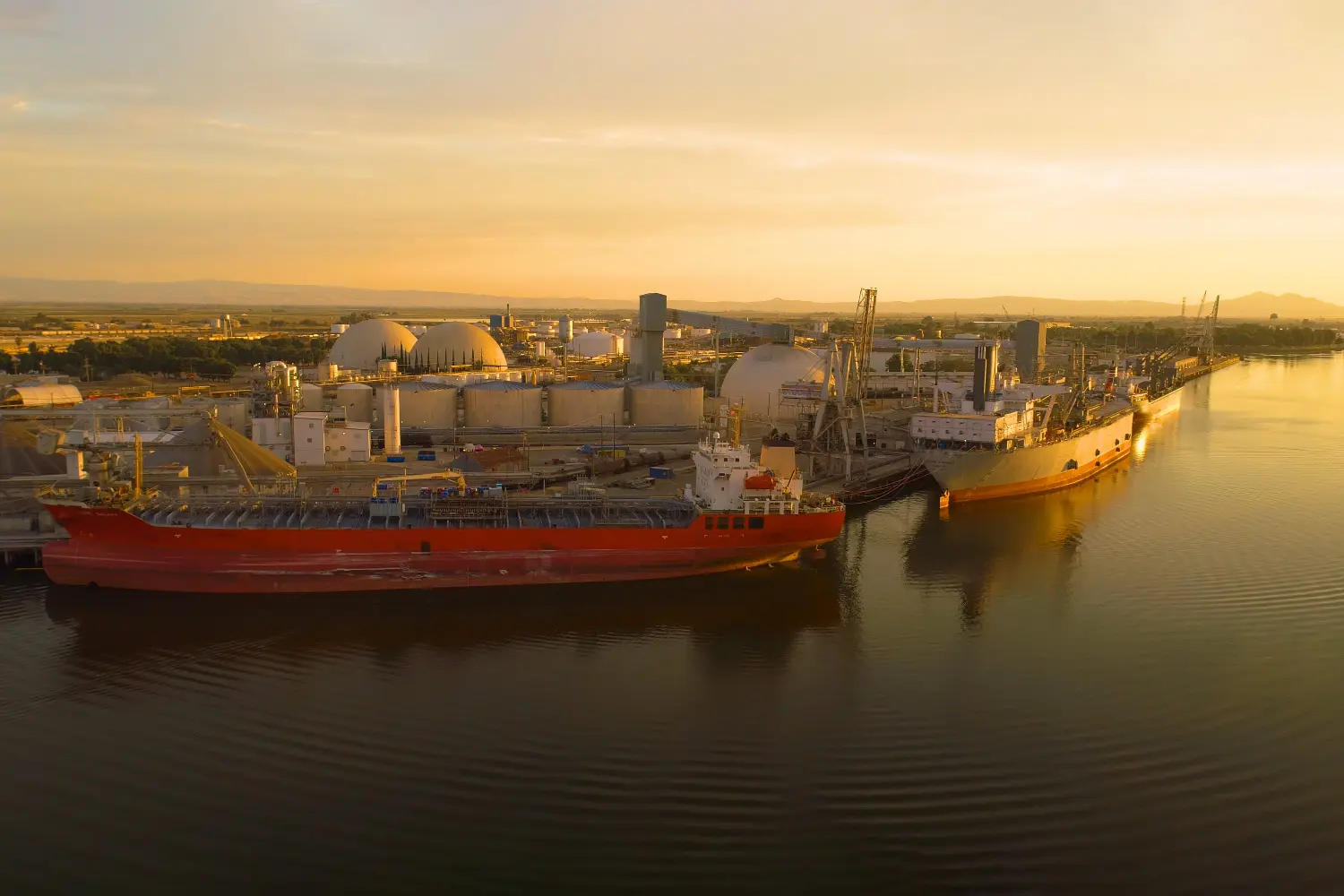
The transition to a clean energy future is fraught with difficult decisions, particularly when immediate solutions seem elusive. This complexity is evident in the recent approval of a hydrogen plant at the Port of Stockton, a small inland port in California’s Central Valley (1). On the surface, hydrogen might seem like a cleaner alternative to fossil fuels, but a closer examination reveals that not all hydrogen is created equal (2), and this project may represent a step backward rather than forward.
The Port of Stockton, under pressure from California regulators to convert its vehicles to zero-emissions models, was at a crossroads. The Port of Stockton has been recognized as a national leader in vehicle electrification, successfully converting approximately 40% of its cargo-handling equipment from diesel to battery-electric models. However, electric alternatives are not yet available for all types of equipment, and those already in use have encountered various issues. For example, sensors have malfunctioned in colder weather or due to moisture, and maintenance requires specialized knowledge of the equipment’s complex computer systems, making repairs more difficult. Rather than investing in better qualified staff the port is considering Hydrogen fuel-cell trucks, which are also zero-emissions at the tailpipe, appeared to be a viable alternative, but Stockton lacked a local hydrogen source.
BayoTech, a company offering to build a hydrogen plant at the port, proposed a solution. The catch? This hydrogen would be produced from methane, the primary component of natural gas, using a process called steam methane reforming (SMR). While hydrogen trucks don’t release carbon emissions, the production process for this type of hydrogen is incredibly carbon-intensive. For every kilogram of hydrogen produced, the plant will emit 18 kilograms of carbon dioxide—a startling figure that far exceeds the Department of Energy’s standard for clean hydrogen (3).
This is where the false solution comes into play. While the hydrogen produced at this plant might help reduce emissions from diesel trucks, the production process itself will still contribute significantly to the region’s already dire pollution levels. Stockton ranks in the 96th percentile for pollution burden in California (4) and the port’s decision to approve a fossil-fueled hydrogen plant will only exacerbate the problem.
The port’s deputy director, Jeff Wingfield, has defended the decision, but environmental groups in Stockton are raising concerns. Stockton already faces severe pollution, and this new plant will add more carbon and other harmful chemicals like nitrogen oxides and particulate matter. Local residents, who already suffer from high asthma rates, fear that the plant will worsen the city’s air quality.
Davis Harper, from the organization Restore the Delta, expressed frustration that Stockton—a community already suffering from the impacts of industrial pollution—approved a project that continues to rely on methane rather than transitioning toward truly clean alternatives.
One of the central issues in Stockton’s decision is the state’s hydrogen policy. Governor Gavin Newsom has committed California to developing a climate-friendly hydrogen industry as part of a broader strategy to decarbonize the state’s largest industries. Yet, in practice, the state’s approach has allowed projects like the one in Stockton to proceed, even when they rely on fossil fuels. While the port claims that the plant will reduce emissions by replacing diesel with hydrogen, this narrow focus overlooks the larger climate implications of how the hydrogen is produced.
As the world grapples with the urgent need to decarbonize, projects like the one in Stockton illustrate the dangers of false solutions. Investing in fossil hydrogen today risks undermining the clean energy industry of tomorrow.
As California aims for a greener future, this project presents a difficult question: Should we use “dirty” hydrogen now, hoping that cleaner alternatives will come later? Critics argue that this approach could slow progress toward truly clean energy. According to Transport & Environment, hydrogen trucks are more expensive than electric ones, and so is the cost of fuel. The tenants at the Port of Stockton should consider all the costs associated with hydrogen—from financial implications to human health.
The hydrogen plant at the Port of Stockton is a cautionary tale of what can happen when we gamble on false solutions. The path forward is clear: we must invest in technologies that reduce emissions both now and in the future, rather than those that trade one form of pollution for another. By demanding better solutions, we can build a cleaner, healthier world for all.
09/24/2024 – This article has been written by the FalseSolutions.Org team
(1) https://heatmap.news/economy/hydrogen-port-stockton-bayotech
(2) https://falsesolutions.org/greenwashing-hydrogen/
(3) https://www.hydrogen.energy.gov/library/policies-acts/clean-hydrogen-production-standard
(4) https://oehha.ca.gov/calenviroscreen/census-tract/6077000100
One Response
It’s great to see environmentalists standing up against the hydrogen project at the Port of Stockton. The lawsuit filed by the Sierra Club and the Center for Biological Diversity highlights a major concern: the hydrogen plant’s environmental impact was not thoroughly reviewed before approval.
It’s clear that the environmental review process needs to account for the full range of impacts and explore truly clean alternatives, rather than relying on dirty hydrogen. Kudos to the advocates for demanding accountability and pushing for better solutions that align with our climate priorities.
For more details, check out the full article in the Sacramento Bee: https://www.sacbee.com/news/politics-government/capitol-alert/article292638919.html#storylink=cpy.